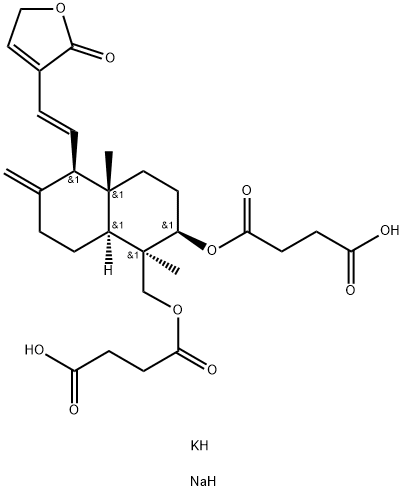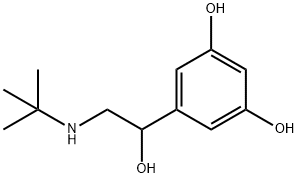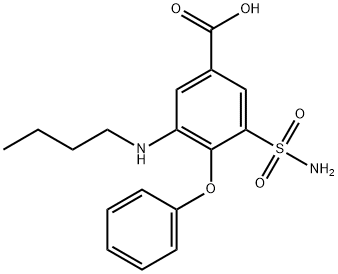BROMOHEXINE
- CAS NO.:3572-43-8
- Empirical Formula: C14H20Br2N2
- Molecular Weight: 376.13
- MDL number: MFCD00436295
- EINECS: 222-684-1
- SAFETY DATA SHEET (SDS)
- Update Date: 2025-10-28 16:00:23

What is BROMOHEXINE?
Absorption
After oral administration, bromhexine demonstrates linear pharmacokinetics when given in doses of 8-32 mg. Bromhexine is readily absorbed in the gastrointestinal tract at a rapid rate. This drug undergoes extensive first-pass effect in the range of 75-80%. The bioavailability is therefore reduced to approximately 22-27%.
Toxicity
The oral LD50 of bromhexine in rats is 6 g/kg. The observed symptoms of accidental overdose with bromhexine are consistent with the known adverse effects of bromhexine, including headache, nausea, and vomiting, among other symptoms. Provide symptomatic treatment and contact poison control services if an overdose is confirmed or suspected.
Originator
Bisolvon,Boehringer Ingelheim,Switz.,1963
The Uses of BROMOHEXINE
Expectorant; mucolytic.
Background
Bromhexine is mucolytic agent used for a variety of respiratory conditions associated with increased mucus secretion. It is derived from the Adhatoda vasica plant and aids in the clearance of excess mucus, improving breathing and reducing cough. It was introduced into the market in 1963, and is widely available as an over-the-counter drug in many countries. Recently, bromhexine and its metabolite ambroxol have garnered interest for the potential prevention and treatment of COVID-19 due to their interactions with cell receptors in the lungs.
Indications
Bromohexine is used alone or with other ingredients such as diphenhydramine, dextromethorphan, and guaifenesin to reduce mucus viscosity and clear mucus in conditions associated with mucus hypersecretion, including the common cold, influenza, respiratory tract infections, or other conditions.
Definition
ChEBI: A substituted aniline that is 2,4-dibromoaniline which is substituted at position 6 by a [cyclohexyl(methyl)amino]methyl group. It is used (as the monohydrochloride salt) as a mucolytic for the treatment of respiratory disorders associated with productive ough (i.e. a cough characterised by the production of sputum).
Manufacturing Process
In initial steps, 2-nitrobenzylbromide and cyclohexylmethylamine are reacted
and that initial product reacted with hydrazine to give N-(2-aminobenzyl)-Nmethyl-
cyclohexylamine.
A solution of 29.3 g of bromine in 50 cc of glacial acetic acid was slowly added
dropwise to a solution of 159 g of N-(2-aminobenzyl)-N-methylcyclohexylamine,
accompanied by stirring. The glacial acetic acid was
decanted from the precipitate formed during the addition of the bromine
solution, and the precipitate was thereafter shaken with 200 cc of 2N sodium
hydroxide and 600cc of chloroform until all of the solids went into solution.
The chloroform phase was allowed to separate from the aqueous phase. The
chloroform phase was decanted, evaporated to dryness and the residue was
dissolved in absolute ether. The resulting solution was found to be a solution
of N-(2-amino-3,5-dibromobenzyl)-N-methyl-cyclohexylamine in ethanol. Upon
introducing hydrogen chloride into this solution, the hydrochloride of N-(2-
amino-3,5-dibromobenzyl)-N-methyl-cyclohexylamine precipitated out. It had
a melting point of 232°-235°C (decomposition).
Therapeutic Function
Expectorant; Mucolytic
Pharmacokinetics
Bromhexine thins airway secretions, improving breathing and discomfort associated with thick mucus in airways associated with a variety of respiratory conditions.
Metabolism
Bromhexine is almost completely metabolized to a variety of hydroxylated metabolites in addition to dibromanthranilic acid. Ambroxol is a known metabolite of bromhexine. In one study of human plasma, (E)-4-hydroxydemethylbromhexine (E-4-HDMB) and (E)-3-hydroxydemethylbromhexine (E-3-HDMB) were quantified as major metabolites of ambroxol, and (Z)-4-hydroxydemethylbromhexine and (Z)-3-hydroxydemethylbromhexine were quantified as minor metabolites.
Properties of BROMOHEXINE
| Melting point: | 238℃ |
| Boiling point: | 413.8±40.0 °C(Predicted) |
| Density | 1.57 |
| storage temp. | 2-8°C(protect from light) |
| solubility | DMSO: 75 mg/mL (199.40 mM);Ethanol: 75 mg/mL (199.40 mM) |
| pka | 8.34±0.20(Predicted) |
| Water Solubility | Water: Insoluble |
Safety information for BROMOHEXINE
Computed Descriptors for BROMOHEXINE
BROMOHEXINE manufacturer
New Products
4,4-Difluoropiperidine hydrochloride tert-butyl 9-methoxy-3-azaspiro[5.5]undecane-3-carboxylate Indole Methyl Resin N-Isopropylurea N,N-Dicyclohexylcarbodiimide(DCC) MELDRUMS ACID 5-METHYLISOXAZOLE-4-CARBOXYLIC ACID Magnessium Bis glycinate Zinc ascorbate 1-bromo-2-butyne 2-acetamidophenol 9(10H)-anthracenone Erythrosin B, 4-Piperidinopiperidine 2-((4-morpholinophenylamino) (methylthio) methylene) malononitrile 2,4-dihydroxybenzaldehyde 3-(4-morpholinophenylamino)-5-amino-1H-pyrazole-4-carbonitrile Methyl 2-methylquinoline-6-carboxylate 2,6-dichloro-4-nitropyridine 4-Bromo-2-chlorobenzonitrile 2-(benzylamino)acetic acid hydrochloride 4-(tert-Butoxycarbonylamino)but- 2-ynoic acid 3,4-dihydro-2H-benzo[b][1,4]dioxepine 1-Phenyl-1-cycloprppanecarboxylicacidRelated products of tetrahydrofuran








You may like
-
 Bromhexine 98%View Details
Bromhexine 98%View Details -
 3572-43-8 98%View Details
3572-43-8 98%View Details
3572-43-8 -
 3572-43-8 99%View Details
3572-43-8 99%View Details
3572-43-8 -
 3572-43-8 99%View Details
3572-43-8 99%View Details
3572-43-8 -
 Bromhexine ( 3572-43-8)View Details
Bromhexine ( 3572-43-8)View Details
3572-43-8 -
 Bromhexine APIView Details
Bromhexine APIView Details
3572-43-8 -
 20677-73-0 (2,2-diethoxyethyl)methylamine 98%View Details
20677-73-0 (2,2-diethoxyethyl)methylamine 98%View Details
20677-73-0 -
 3-(4-(hydroxyamino)-1-oxoisoindolin-2-yl)piperidine-2,6-dione 98%View Details
3-(4-(hydroxyamino)-1-oxoisoindolin-2-yl)piperidine-2,6-dione 98%View Details
